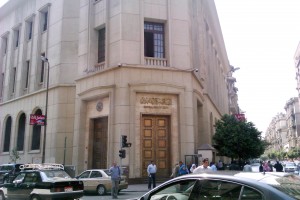
(Abdelazim Saafan/DNE Photo)
Egypt’s foreign debt surged by $4.4bn, to reach $38.8bn in the second quarter of the 2012-2013 fiscal year, compared to $34.4bn at the end of the 2011-2012 fiscal year, according to a recent Central Bank of Egypt (CBE) report.
The report attributed the recent rise to the increase in exchange rates of most borrower currencies compared to the US dollar along with the increase of net use of loans, advances and deposits, which came to $4.4bn.
Foreign debt has also been affected by the decrease in revenues from Egyptian bonds in global markets, which dropped by $236.5m since June 2012, said the report.
“This rise in foreign debt is due to all these loans we are getting,” said economist Magdy Toulba, “from Libya, Qatar, Saudi Arabia, Turkey, along with the deposits in the CBE.”
Toulba said he believed that foreign debt would reach $45bn if Egypt succeeds in securing the proposed $4.8bn loan from the International Monetary Fund (IMF), which, he said, “would put Egypt in a much worse position”.
In March, the Ministry of Finance said that Egypt’s foreign debt increased by 15.2% in the second quarter of the 2012-2013 financial year, reaching $38.8bn, compared to $33.7bn in the same quarter the year previous.
“This increase is considered the highest growth rate recorded for Egyptian foreign debt since March 2008,” said the Finance Ministry report.
The report attributed the increase to Qatar’s $3bn loan deposit to the CBE during the second quarter of FY 2012-2013 as part of its financial aid promised to Egypt.
After the Libyan and Qatari deposits totalling $5bn, Egypt’s foreign debt jumped to $43.8bn which may approach the foreign debt recorded by Egypt in 1990, which was $47.6bn.
Total domestic debt reached EGP 1.380tn in the second quarter of the 2012-2013 financial year, of which 81.6% is owed by the government, 5% is owed by economic public authorities, and 13.4% by the National Investments Bank (NIB).
Domestic debt stood at EGP 599.6bn in June 2008, EGP 699.6bn in June 2009, then surging by a further EGP 100bn in June 2010, totalling more than EGP 700bn.
In the first quarter of 2011-2012, Egypt’s domestic debt reached EGP 967.29bn and in December 2011 it edged up to EGP 1.058tn.
Regarding the domestic debt, Toulba said that it was also due to “too many loans”, along with a dependence on treasury bills. “The government relies on no other sources except loans,” he said.
“Too many loans may lead to Egypt using 85% of its GDP to pay them back,” said Toulba. “Furthermore, Egypt may not actually be able to pay them back, causing an even worse deficit.”
He added that what he believed to be the country’s excessive “appetite for loans” will affect GDP and state services such as education, health and development, and “it may lead to further bankruptcy”.
“Egypt has many other ways to plug its deficit besides loans,” he said, “by increasing resources, enhancing Suez Canal revenues and eradicating corruption.”
Before the Qatari and Libyan deposits, Egypt’s foreign currency reserves had plunged to $13.4bn in March, below the reserve level necessary to cover imports for three months.




